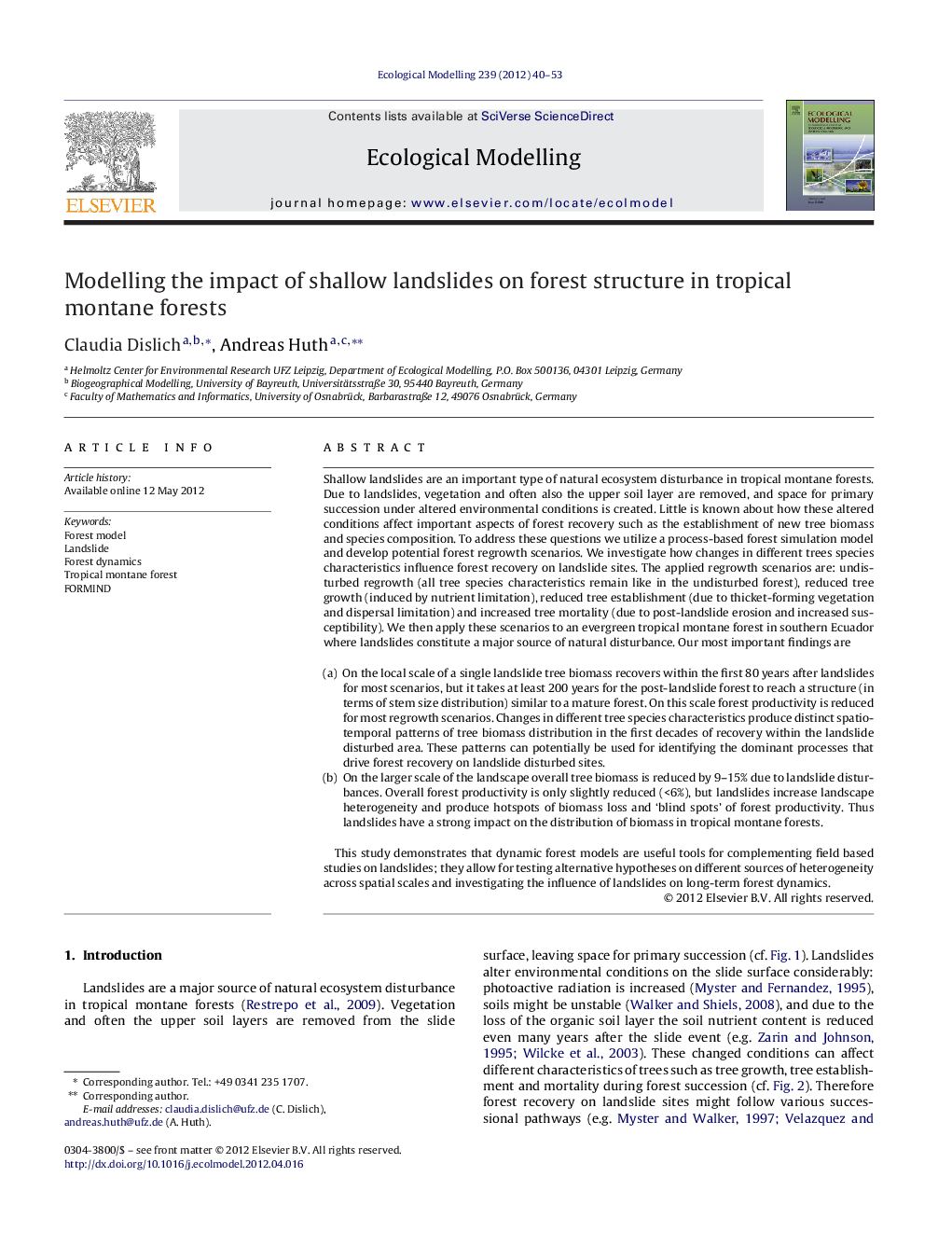| کد مقاله | کد نشریه | سال انتشار | مقاله انگلیسی | نسخه تمام متن |
|---|---|---|---|---|
| 4376438 | 1617506 | 2012 | 14 صفحه PDF | دانلود رایگان |

Shallow landslides are an important type of natural ecosystem disturbance in tropical montane forests. Due to landslides, vegetation and often also the upper soil layer are removed, and space for primary succession under altered environmental conditions is created. Little is known about how these altered conditions affect important aspects of forest recovery such as the establishment of new tree biomass and species composition. To address these questions we utilize a process-based forest simulation model and develop potential forest regrowth scenarios. We investigate how changes in different trees species characteristics influence forest recovery on landslide sites. The applied regrowth scenarios are: undisturbed regrowth (all tree species characteristics remain like in the undisturbed forest), reduced tree growth (induced by nutrient limitation), reduced tree establishment (due to thicket-forming vegetation and dispersal limitation) and increased tree mortality (due to post-landslide erosion and increased susceptibility). We then apply these scenarios to an evergreen tropical montane forest in southern Ecuador where landslides constitute a major source of natural disturbance. Our most important findings are(a)On the local scale of a single landslide tree biomass recovers within the first 80 years after landslides for most scenarios, but it takes at least 200 years for the post-landslide forest to reach a structure (in terms of stem size distribution) similar to a mature forest. On this scale forest productivity is reduced for most regrowth scenarios. Changes in different tree species characteristics produce distinct spatio-temporal patterns of tree biomass distribution in the first decades of recovery within the landslide disturbed area. These patterns can potentially be used for identifying the dominant processes that drive forest recovery on landslide disturbed sites.(b)On the larger scale of the landscape overall tree biomass is reduced by 9–15% due to landslide disturbances. Overall forest productivity is only slightly reduced (<6%), but landslides increase landscape heterogeneity and produce hotspots of biomass loss and ‘blind spots’ of forest productivity. Thus landslides have a strong impact on the distribution of biomass in tropical montane forests.This study demonstrates that dynamic forest models are useful tools for complementing field based studies on landslides; they allow for testing alternative hypotheses on different sources of heterogeneity across spatial scales and investigating the influence of landslides on long-term forest dynamics.
► We simulate potential forest recovery scenarios after landslide disturbance.
► Tree biomass recovers after <80 years, tree size distribution after 200 years.
► Different scenarios yield distinct spatio-temporal patterns of biomass distribution.
► On the landscape scale tree biomass is reduced 9–15% by landslides.
► Landslides affect the carbon cycle of montane forests in complex ways.
Journal: Ecological Modelling - Volume 239, 24 July 2012, Pages 40–53